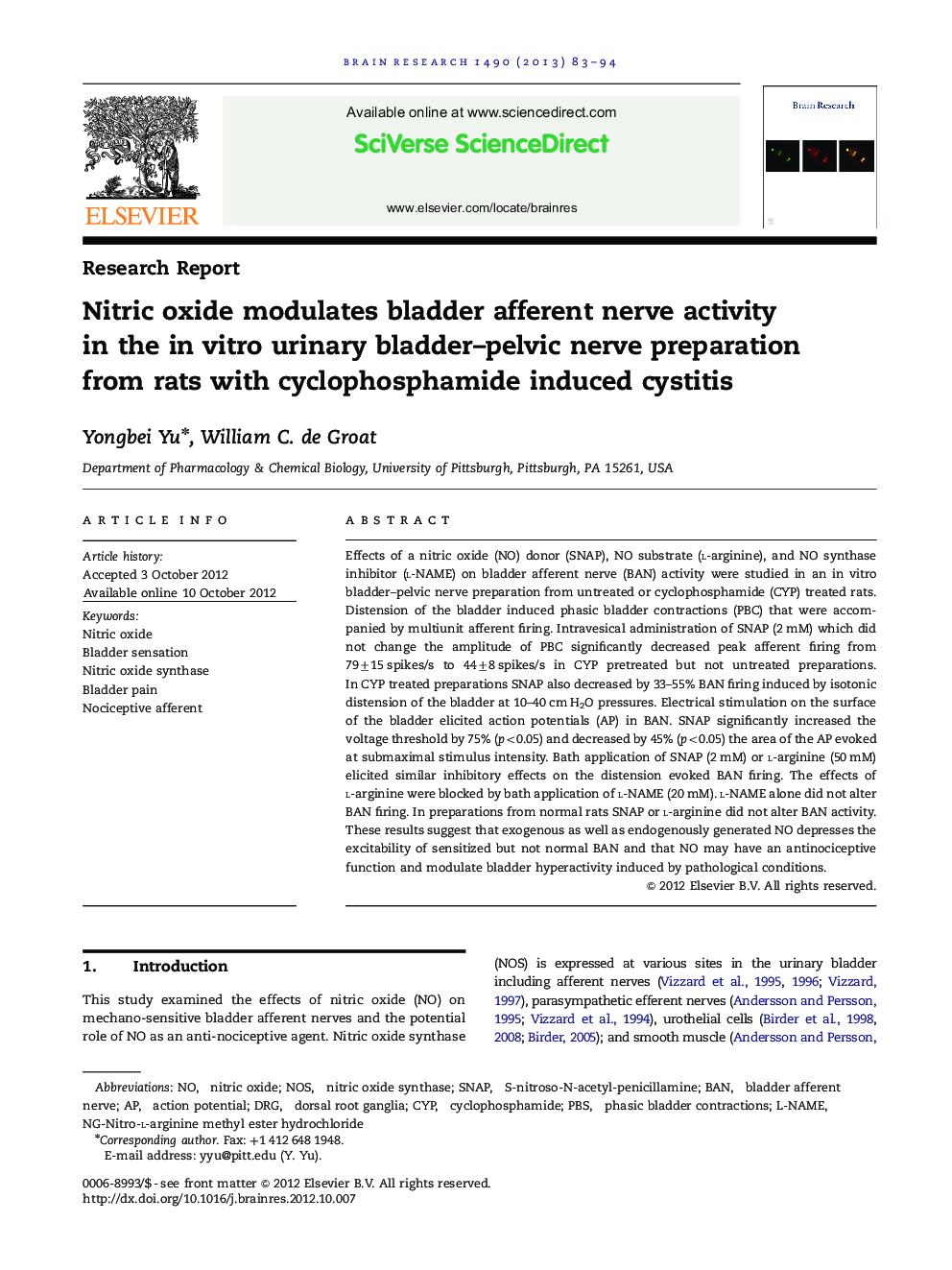| Article ID | Journal | Published Year | Pages | File Type |
|---|---|---|---|---|
| 4324869 | Brain Research | 2013 | 12 Pages |
Effects of a nitric oxide (NO) donor (SNAP), NO substrate (l-arginine), and NO synthase inhibitor (l-NAME) on bladder afferent nerve (BAN) activity were studied in an in vitro bladder–pelvic nerve preparation from untreated or cyclophosphamide (CYP) treated rats. Distension of the bladder induced phasic bladder contractions (PBC) that were accompanied by multiunit afferent firing. Intravesical administration of SNAP (2 mM) which did not change the amplitude of PBC significantly decreased peak afferent firing from 79±15 spikes/s to 44±8 spikes/s in CYP pretreated but not untreated preparations. In CYP treated preparations SNAP also decreased by 33–55% BAN firing induced by isotonic distension of the bladder at 10–40 cm H2O pressures. Electrical stimulation on the surface of the bladder elicited action potentials (AP) in BAN. SNAP significantly increased the voltage threshold by 75% (p<0.05) and decreased by 45% (p<0.05) the area of the AP evoked at submaximal stimulus intensity. Bath application of SNAP (2 mM) or l-arginine (50 mM) elicited similar inhibitory effects on the distension evoked BAN firing. The effects of l-arginine were blocked by bath application of l-NAME (20 mM). l-NAME alone did not alter BAN firing. In preparations from normal rats SNAP or l-arginine did not alter BAN activity. These results suggest that exogenous as well as endogenously generated NO depresses the excitability of sensitized but not normal BAN and that NO may have an antinociceptive function and modulate bladder hyperactivity induced by pathological conditions.
► Cyclophosphamide-induced cystitis enhances mechanosensitive bladder afferent firing. ► Nitric oxide suppresses afferent firing in bladders irritated by cyclophosphamide. ► Nitric oxide does not suppress afferent firing in normal bladders. ► l-NAME blocks the inhibitory effect of l-arginine on bladder afferent firing. ► SNAP, a nitric oxide donor, suppresses afferent firing in irritated bladders.
